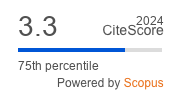Article | Open Access
Preventative Social Care and Community Development in Wales: “New” Legislation, “Old” Tensions?
| Views: | 1660 | | | Downloads: | 1582 |
Abstract: Prevention is becoming ever more central in UK care policy for older people, though precisely what this entails, and how it works most effectively in social care and support, remains ambiguous. Set against the “newness” of recent social care legislation in Wales, this article explores the perspectives of professionals on prevention and community development, particularly for older people. This draws on qualitative data collected from 11 Welsh local authorities, four NHS Wales health boards, and eight regional third-sector organisations, incorporating 64 interviews with directors, executives, and senior managers. Recent research has highlighted concerns over the slipperiness of prevention as a concept, resulting in multiple interpretations and activities operating under its banner. Consistent with this, our data suggested a kaleidoscopic picture of variously named community-based initiatives working to support the intricate web of connections that sustain older people, as well as provide practical or material help. Similarly, professionals highlighted varied agendas of community resilience, individual independence, and reducing the need for state-funded health and social care, as well as a range of viewpoints on the roles of the state, private sector, and the third sector. Analysis revealed fragments of familiar themes in community development; positive hopes for community initiatives, tensions between the mixed agendas of state-instigated activities, and the practical challenges arising from systems imbued with neo-liberal ideas. Realising the promise of prevention will require deft steering through these challenges.
Keywords: ageing; community development; independence; older people; social care and support; social policy
Published:
© Simon Read, Fiona Verity, Mark Llewellyn, Gideon Calder, Jonathan Richards. This is an open access article distributed under the terms of the Creative Commons Attribution 4.0 license (http://creativecommons.org/licenses/by/4.0), which permits any use, distribution, and reproduction of the work without further permission provided the original author(s) and source are credited.


